Related Research Articles

Cromartyshire is a historic county in the Highlands of Scotland, comprising the medieval "old shire" around the county town of Cromarty and 22 enclaves and exclaves transferred from Ross-shire in the late 17th century. The largest part, six times the size of the old shire, is Coigach, northwest from Ullapool. In 1890, Cromartyshire was merged with Ross-shire into the administrative county of Ross and Cromarty, which in 1975 was merged into the new council area of Highland.

The historic counties of England are areas that were established for administration by the Normans, in many cases based on earlier kingdoms and shires created by the Angles, Saxons, Jutes, Celts and others. They are alternatively known as ancient counties, traditional counties, former counties or simply as counties. In the centuries that followed their establishment, as well as their administrative function, the counties also helped define local culture and identity. This role continued even after the counties ceased to be used for administration after the creation of administrative counties in 1889, which were themselves amended by further local government reforms in the years following.
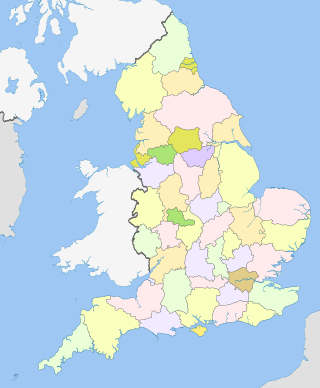
The counties of England are divisions of England. There are currently 48 ceremonial counties, which have their origin in the historic counties of England established in the Middle Ages. The current ceremonial counties are the result of the Lieutenancies Act 1997 and are based on the Local Government Act 1972 administrative counties which included a number of new counties such as Greater Manchester and Tyne and Wear. However, some counties introduced by the Local Government Act 1972, including Avon, Cleveland and Humberside no longer exist. The term "county", relating to any of its meanings, is used as the geographical basis for a number of institutions such as police and fire services, sports clubs and other non-government organisations.

Ceremonial counties, formally known as counties for the purposes of the lieutenancies, are areas of England to which lord-lieutenants are appointed. A lord-lieutenant is the monarch's representative in an area. Shrieval counties have the same boundaries and serve a similar purpose, being the areas to which high sheriffs are appointed. High sheriffs are the monarch's judicial representative in an area.
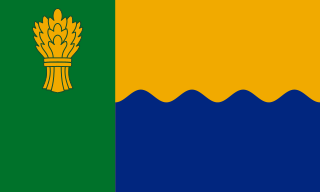
Moray; or Morayshire, called Elginshire until 1919, is a historic county, registration county and lieutenancy area of Scotland, bordering Nairnshire to the west, Inverness-shire to the south, and Banffshire to the east. It was a local government county, with Elgin the county town, until 1975. The county was officially called Elginshire, sharing the name of the Elginshire parliamentary constituency, so named since 1708.
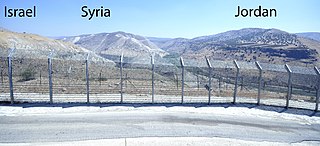
A triple border, tripoint, trijunction, triple point, or tri-border area is a geographical point at which the boundaries of three countries or subnational entities meet. There are 175 international tripoints as of 2020. Nearly half are situated in rivers, lakes or seas. On dry land, the exact tripoints may be indicated by markers or pillars, and occasionally by larger monuments.
A Three Shire Stone is a monument marking the point where three shires meet. The term is mostly used in England.

The Counties Act 1844, which came into effect on 20 October 1844, was an Act of Parliament of the United Kingdom which eliminated many outliers or exclaves of counties in England and Wales for civil purposes. The changes were based on recommendations by a boundary commission, headed by the surveyor Thomas Drummond and summarized in a schedule attached to the Parliamentary Boundaries Act 1832. This also listed a few examples of civil parishes divided by county boundaries, most of which were dealt with by later legislation.
A quadripoint is a point on Earth where four distinct political territories meet. The territories can be of different types, such as national and provincial. In North America, several such places are commonly known as Four Corners. Several examples exist throughout the world that use other names.

A boundary marker, border marker, boundary stone, or border stone is a robust physical marker that identifies the start of a land boundary or the change in a boundary, especially a change in direction of a boundary. There are several other types of named border markers, known as boundary trees, pillars, monuments, obelisks, and corners. Border markers can also be markers through which a border line runs in a straight line to determine that border. They can also be the markers from which a border marker has been fixed.
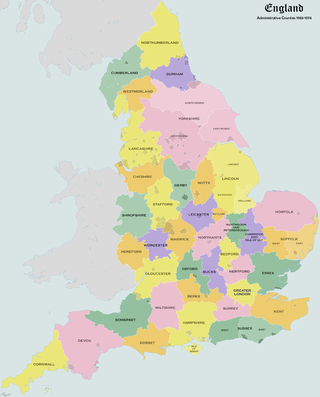
Administrative counties were subnational divisions of England used for local government from 1889 to 1974. They were created by the Local Government Act 1888, which established an elected county council for each area. Some geographically large historic counties were divided into several administrative counties, each with its own county council. The administrative counties operated until 1974, when they were replaced by a system of metropolitan and non-metropolitan counties under the Local Government Act 1972.

The administrative boundaries of Worcestershire, England have been fluid for over 150 years since the first major changes in 1844. There were many detached parts of Worcestershire in the surrounding counties, and conversely there were islands of other counties within Worcestershire. The 1844 Counties Act began the process of eliminating these, but the process was not completed until 1966, when Dudley was absorbed into Staffordshire.
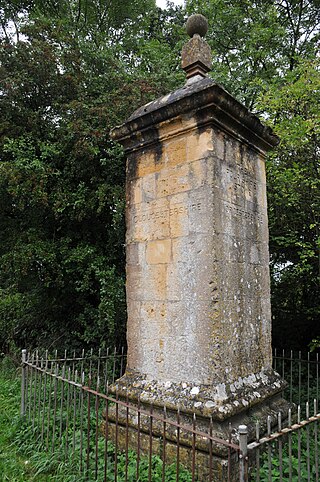
The Four Shire Stone is a boundary marker that marks the place where the four historic English counties of Warwickshire, Oxfordshire, Gloucestershire, and Worcestershire once met. Since 1931, with a change to the boundaries of Worcestershire, only three of the counties meet at the stone.
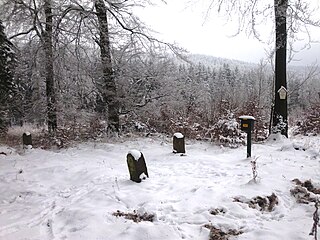
A Dreiherrenstein or Dreiherrnstein is the topographic name of a historical tripoint, especially in the German-speaking lands of central Europe, i.e. a place where the border of three princely territories met, together with any enclosures or border fortifications. The word means literally "Three Lords' Stone".

The North Carolina–Tennessee–Virginia Corners is a tripoint at which North Carolina, Tennessee and Virginia meet. The landmark is located in the Iron Mountains, and is roughly 16 miles north of Snake Mountain, and 8 miles southwest of Mount Rogers.

Evenlode is a village and civil parish in the Cotswold District of eastern Gloucestershire in England.

The Tri-States Monument is a granite monument that marks the tripoint of the state boundaries of New Jersey, New York, and Pennsylvania. It is at the northwestern end of the boundary between New Jersey and New York, the northern end of the boundary between New Jersey and Pennsylvania, and the eastern end of the boundary between New York and Pennsylvania. The monument is located at the confluence of the Delaware and Neversink rivers. This location is also known as Carpenter's Point.

Dow Bridge is a location in the English Midlands where the A5 road crosses the River Avon. It is the point where the three counties of Warwickshire, Leicestershire and Northamptonshire meet, forming a tripoint.
References
- 1 2 These two tripoints are just about a mile from one another, to the east of East Grinstead.
- ↑ Formerly located at TQ426574
- ↑ This tripoint is located beside where the M25 motorway crosses the River Lea.
- ↑ Near to Shippea Hill railway station
- 1 2 Often incorrectly believed to be a quadripoint, these two tripoints are around 20 metres apart.
- ↑ Located at the edge of "Threeshire Wood".
- ↑ Marked by a "Three Shire Stone"
- ↑ Location of the "Four Shire Stone" monument, marking the location of a former quadripoint when the site also bordered a detached area of Worcestershire.
- ↑ Marked by "Three Shire Oak".
- ↑ Marked by Dow Bridge
- 1 2 These two tripoints are just under a mile from one another - see No Man's Heath.
- ↑ Situated 500m north of "Three Shires Oak".
- ↑ Known as Three Shire Heads and the former location of three stones marking the boundary and shown on John Speed's map of 1612.
- ↑ "County boundary mapping from 1995". Ordnance Survey. Archived from the original on 2008-12-09.
- ↑ Ordnance Survey: First Edition, 1806
- ↑ Encyclopedia Americana Corp. (1918). Encyclopedia Americana. p. 354.
- 1 2 These two tripoints are just over a mile from one another near Lechlade.
- ↑ Marked by the "Three Shire Elms"